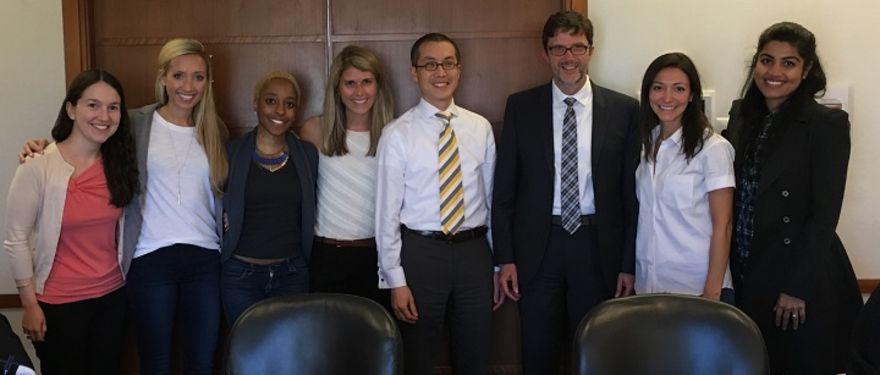At HBS, I spent a lot of time thinking about how I would become a “leader who makes a difference in the world.” It was on my mind as I attended career development programs, agonized over internship opportunities, and prepared yet another case that featured a Fortune 500 CEO making a critical business decision. At times, being a leader who makes a difference in the world felt like a task for a much older, more experienced, more powerful future-self.
In reality, we are tasked with being “difference-making” leaders today, and in roles with far less power and influence than a Fortune 500 CEO. Like many of my classmates, I embraced this type of leadership prior to HBS by volunteering with community organizations. I came to HBS knowing that community leadership would live alongside my professional and personal lives post-HBS. What I didn’t fully appreciate was just how my interactions with these organizations might change as I gained a different set of skills and experiences throughout my MBA.
Did you know that nearly 80% of HBS alumni are asked to serve on nonprofit boards at some point in their lives post-HBS? In the first semester of my EC year, I had the opportunity to work on an independent project with a group of women who, like me, were surprised and energized by this statistic. We recognized that we had countless courses that asked us to consider our post-HBS leadership within our careers, but none that trained us for the roles we were very likely to have within nonprofit community organizations.
Over our first semester, Vatsala Deora, Sara Gentile, Cait Haught, Shannon Nelson, Shireen Soheili, and I worked with Professors Felix Oberholzer-Gee and Nien-hê Hsieh to sketch a course that would fill that curriculum gap. Recognizing that inequality is a critical challenge of our time, we decided to structure the course around inequality in income, education, race, and gender.
We designed a four-week classroom module that challenged students to understand what the biggest drivers of inequality are, whether they think inequality is a problem that needs to be tackled, and if so, how to tackle it. We designed a second, eight-week module that asked students to apply business skills to projects within a dozen local nonprofit organizations that work to reduce inequality in some form. With the help of our faculty advisors, we peppered the course with guest appearances from notable nonprofit executives, researchers, and alumni board members.
During our second semester, we had the opportunity to actually take the course in its pilot form. Along with 21 other students, we struggled to wrap our heads around staggering trends in inequality and examined the organizations that have been created to stem the tide. We studied affordable housing legislation, affirmative action practices, and innovative charter school models. We heard from accomplished economists, seasoned nonprofit executives, and HBS alums with a variety of board experiences. We had real conversations with classmates about confusing and uncomfortable topics, and heard unfiltered critiques from nonprofit leaders about the unique challenges facing mission-driven organizations.
This course – officially titled “Nonprofit Clinic: Tackling Inequality” is one of my most treasured HBS experiences. In taking the course, I learned a lot about an incredibly important topic and had the opportunity to impact the Boston community through my project with a local shelter. In designing the course, I forged friendships with some incredibly talented and passionate women and created something that will live on past my time at HBS. And hopefully, throughout the process, I made a difference.

